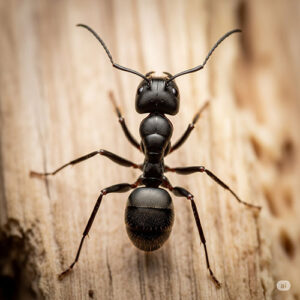Common Reasons Ants Are Found in Your Home
On this page, we explain how ants often invade homes for a few common reasons in the context of ant removal in Dartmouth, MA. One major attractant is food crumbs—even the tiniest bits of sugar, bread, or grease can draw ants inside. They have a strong sense of smell and are quick to find accessible food sources.
Moisture is another key factor. Ants, like most pests, need water to survive. Leaky pipes, damp bathrooms, or wet kitchen areas can become hotspots for ant activity.
Cracks in the foundation or gaps around doors and windows act like open invitations. These tiny openings allow ants to enter your home in search of food and shelter easily.
Lastly, seasonal changes play a big role. During warmer months, ants are more active and may move indoors to escape extreme heat or to forage. During the colder months, they may seek warmth and consistent food sources inside your home.
You can easily safeguard your property with an expert to find the right solution. We pride ourselves on offering specific pest treatments for each type of infestation you may have. Call 774-283-3338 now to discuss your pest problem and find a solution.
Did you know?
Carpenter Ants
- Damage wood by excavating it for nests, not by eating it. Unlike termites, carpenter ants don't consume wood for nutrition. Instead, they tunnel through softened, often moist or decaying wood (like in porch columns, window frames, or wall voids) to create smooth, clean galleries for their colonies, pushing out sawdust-like material (frass) as they go.
Common Ant Species in Dartmouth
Whether you've got common pests or a rarer infestation, you should trust the experts to help. You'll need our pest control services if you're having problems with...
Carpenter Ants (damage)
Pavement Ants (nuisance)
Odorous House Ants (smell)
Little Black Ants, etc.
- Though seasonal pest treatments are popular, we highly recommend establishing a schedule for quarterly visits to maximize how effective your pest control is. Contact our team today to develop a top-notch pest control system.
Carpenter Ants
- They commonly create "satellite nests" in homes. While their main or "parent" colony is often outdoors in dead trees, stumps, or firewood, carpenter ants will establish smaller "satellite" nests inside structures. These indoor nests are typically found in areas with moisture, such as around leaky pipes, in damp basements, or under insulation, and are used to house workers and developing ants.
- You may see large, black, winged ants indoors in spring and early summer. These are "swarmers" – the reproductive males and females that emerge from mature colonies to mate and establish new ones. Their presence indoors is a strong indicator of an established carpenter ant colony nearby, as colonies typically need to be several years old and have thousands of workers before producing swarmers.
Consequences of Ignoring Carpenter Ants in Your Home

You might not notice the damage at first because it happens inside the wood. Over time, however, signs like sagging floors, hollow-sounding walls, or visible wood shavings (frass) will start to appear. By then, the infestation may already be severe, requiring costly repairs.
Carpenter ants are also known to expand their colonies quickly. If left unchecked, a single satellite nest can multiply into several, spreading throughout your home and making extermination much more difficult and expensive.
Besides property damage, their presence can be a sign of moisture problems or wood rot, which are issues on their own. Ignoring them doesn’t just allow ants to thrive—it can also let other pests and fungi flourish, compounding your home maintenance problems.
Academic Research: Nesting and Foraging Characteristics of the Black Carpenter Ant
Overview: This dissertation discusses the biology and ecology of Camponotus pennsylvanicus in the eastern U.S., including Massachusetts. It describes how carpenter ants excavate galleries in decayed and sound wood, both in natural and urban environments, leading to structural damage. The Maine Department of Agriculture also released a study on Carpenter ants.
Findings: In urban settings, carpenter ants are considered structural pests; their gallery formation in wall voids can necessitate costly repairs. The research also notes that living trees are common nesting sites in natural settings.
You can easily safeguard your property with an expert to find the right solution. We pride ourselves on offering specific pest treatments for each type of infestation you may have. Call 774-283-3338 now to discuss your pest problem and find a solution.
